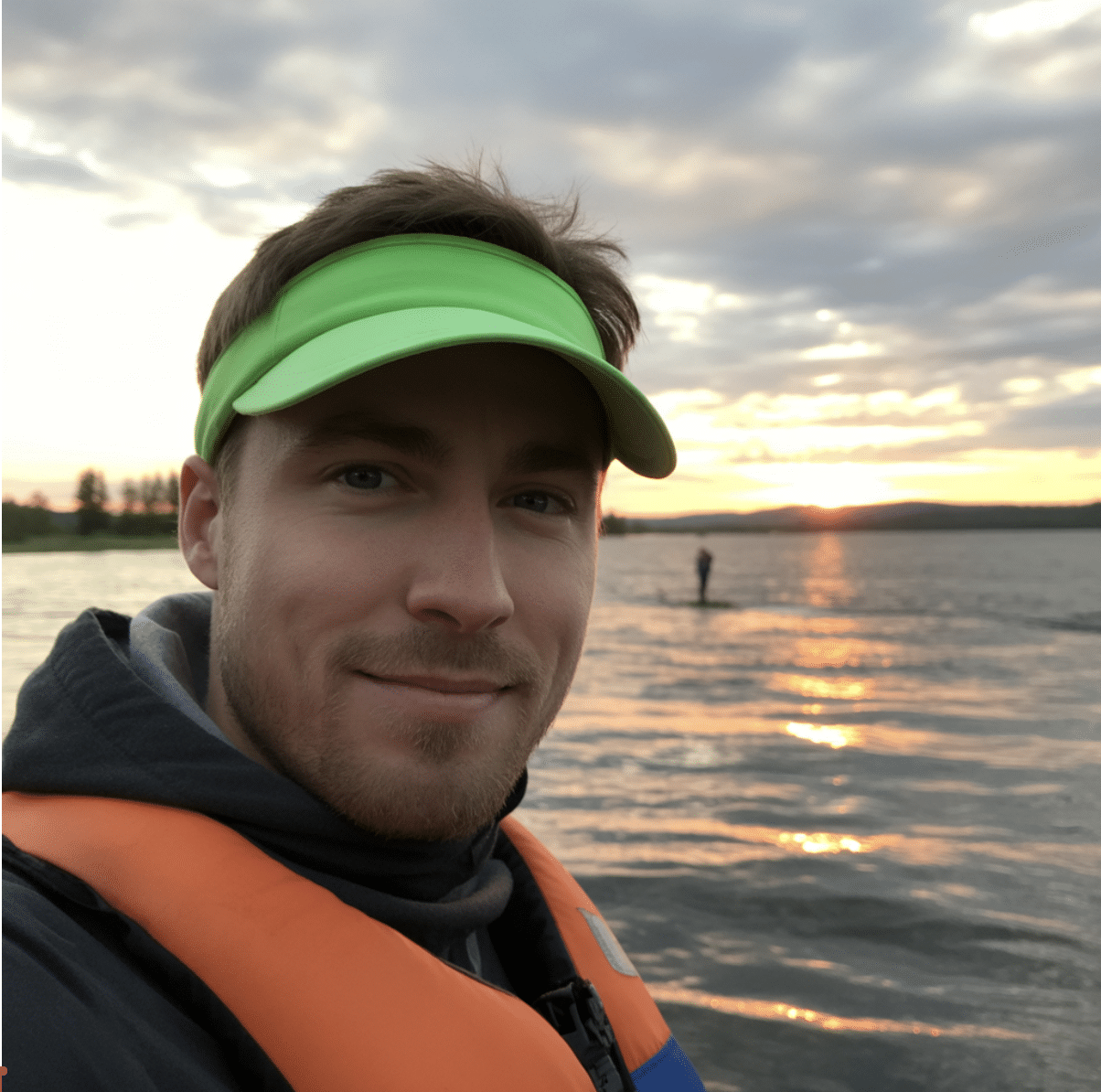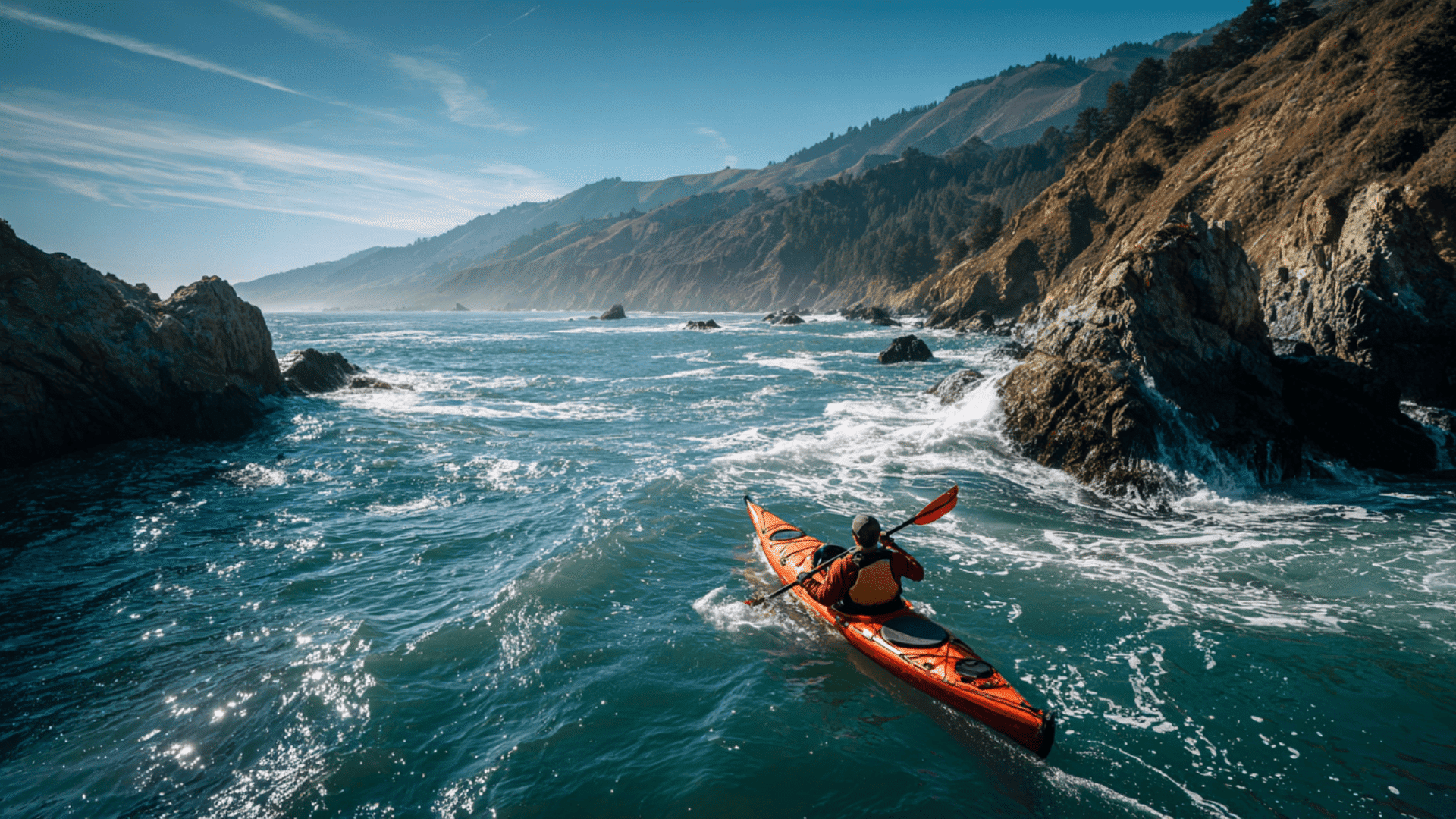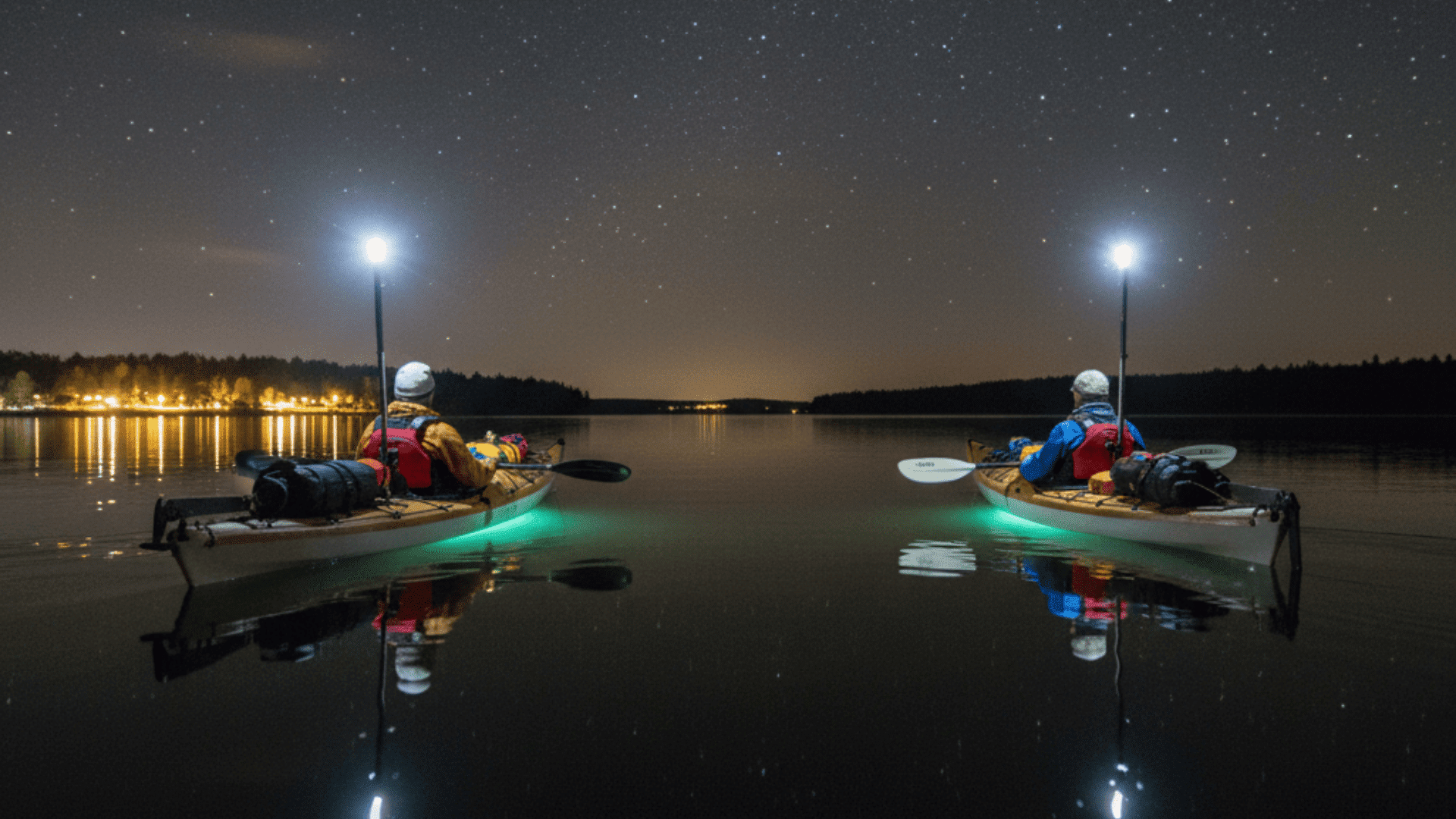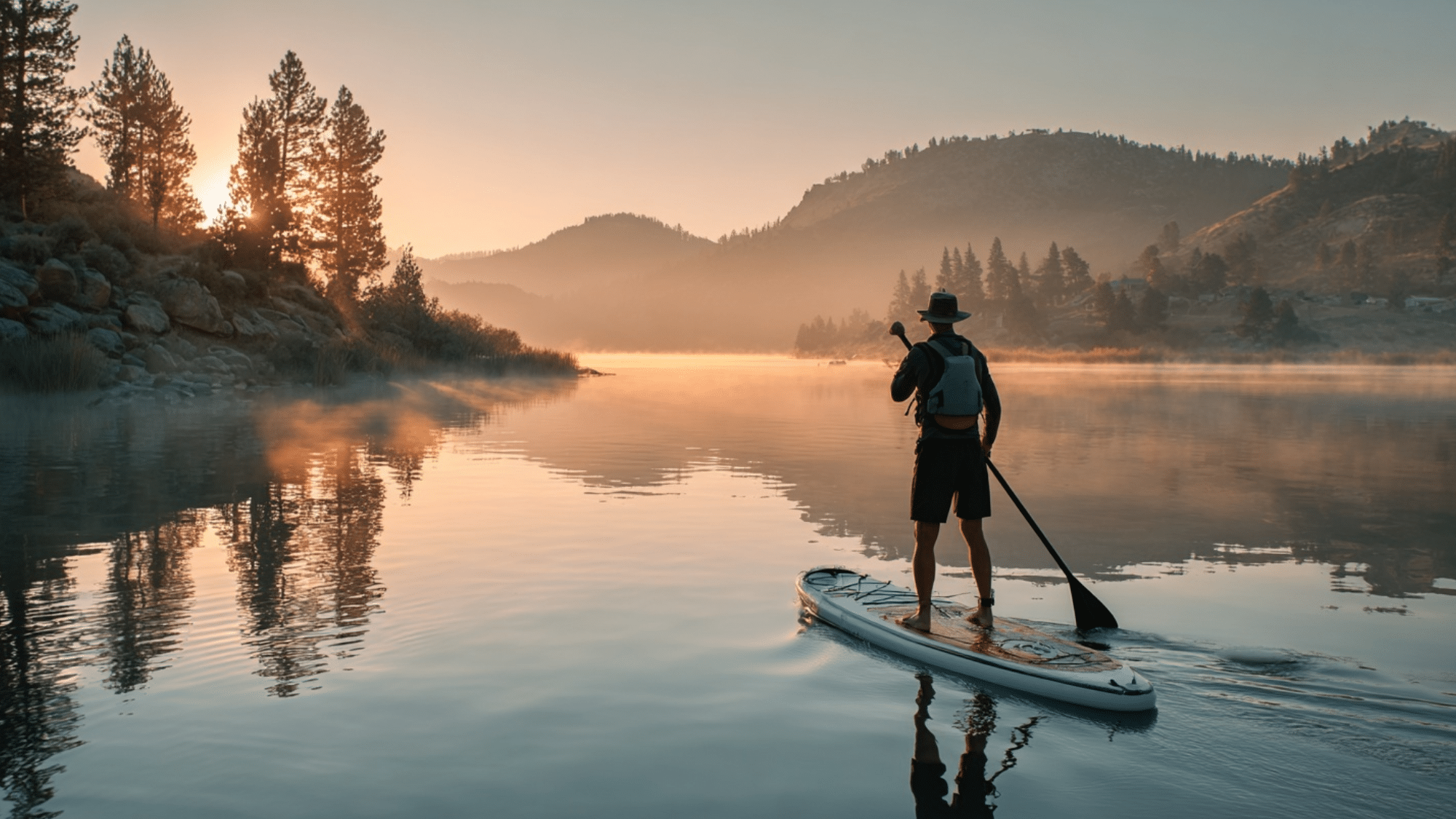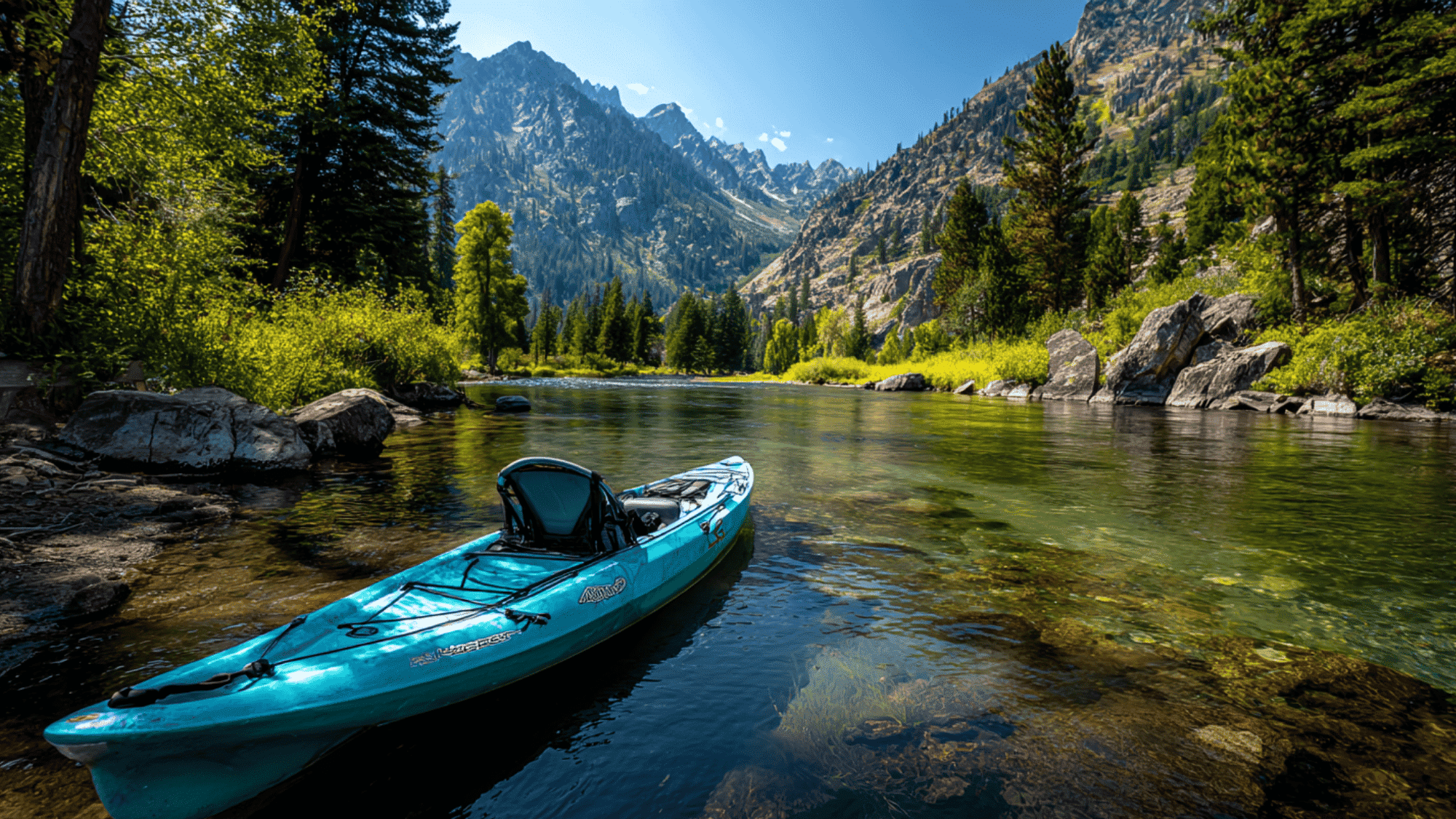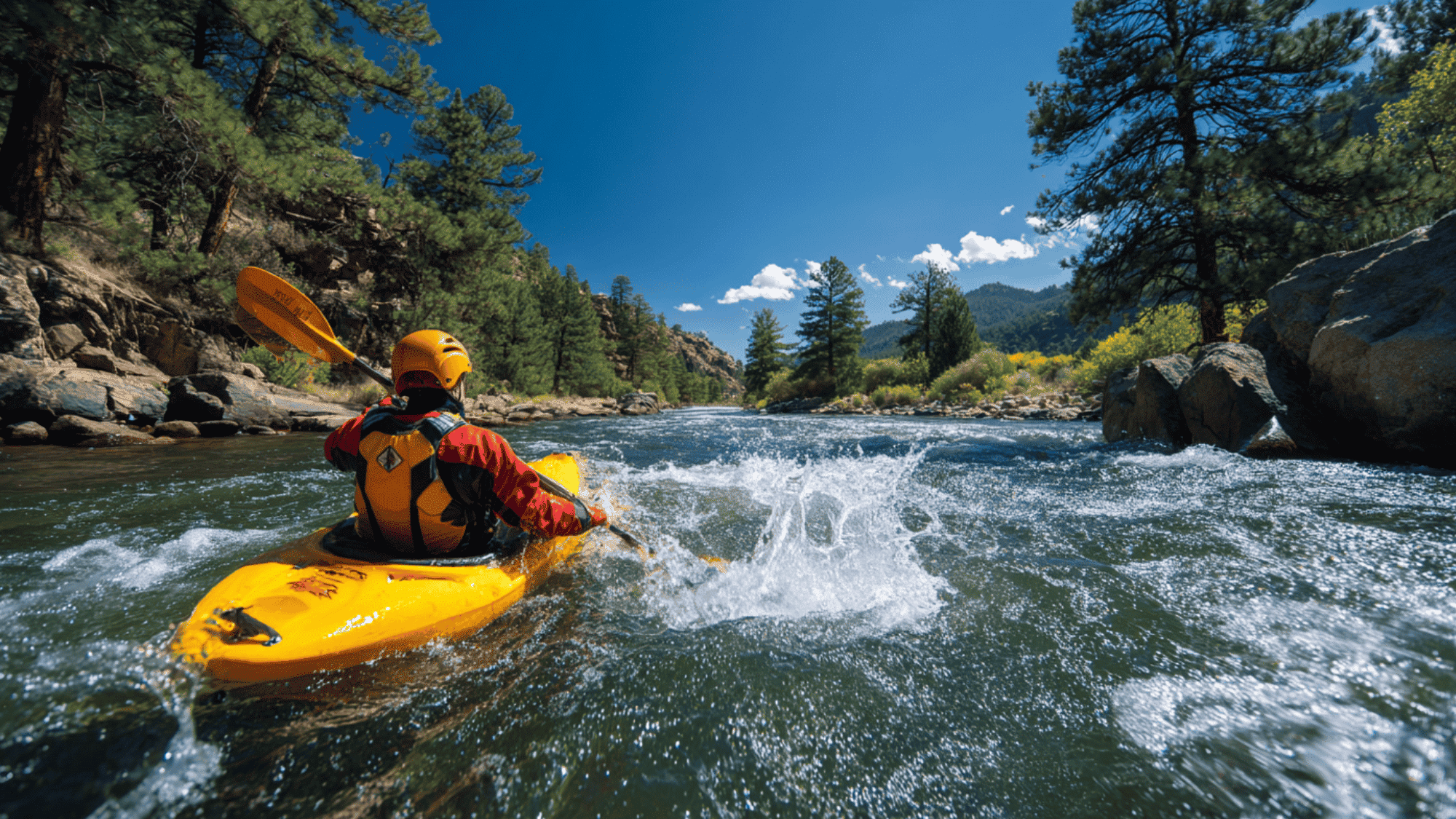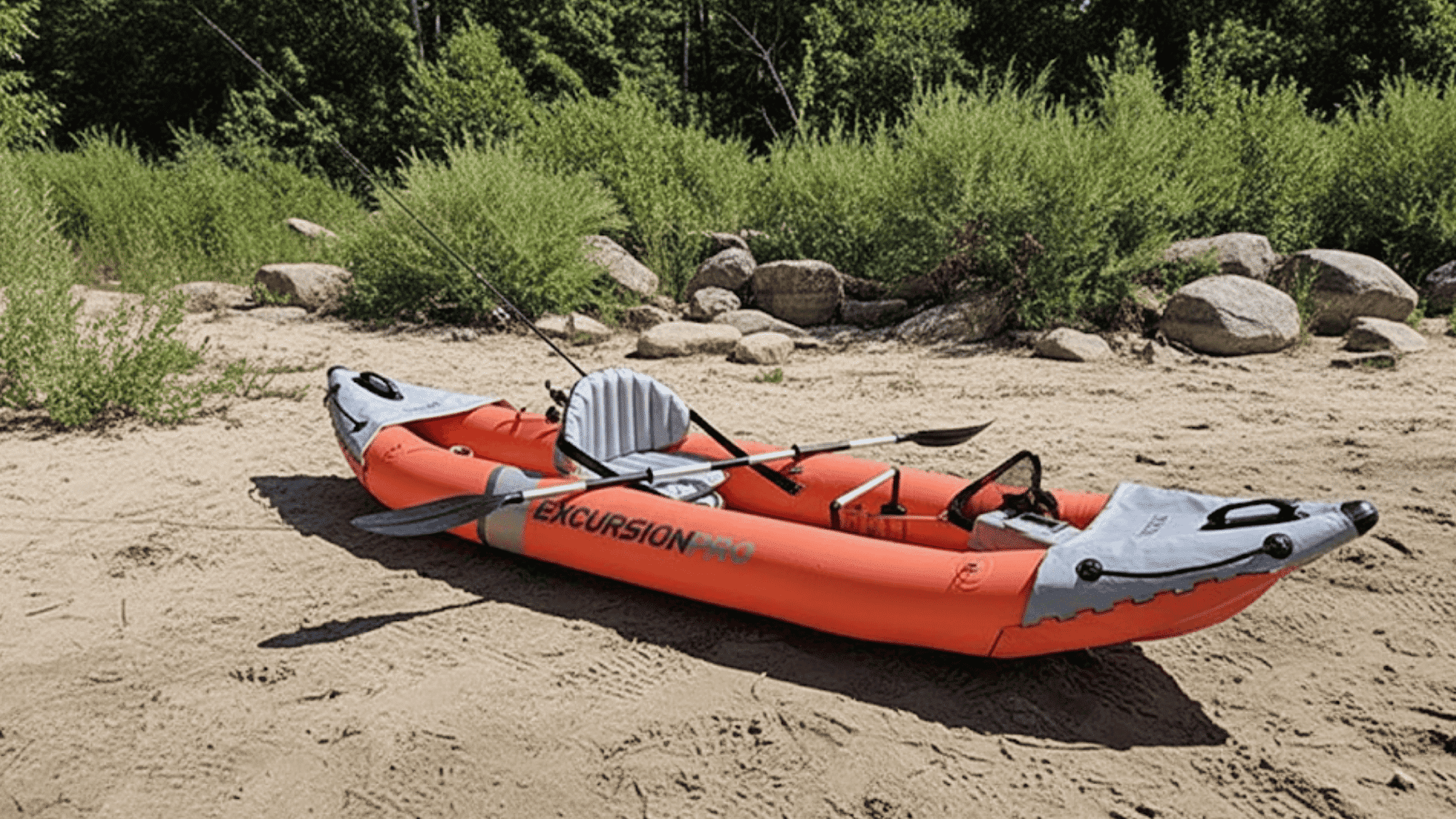Ocean kayaking is one of the most exciting ways to tour the coastline, blending experience with the peaceful rhythm of paddling.
Unlike river kayaking, where rapids and strong currents dominate, ocean kayaking takes you into saltwater environments, such as bays, harbors, and coastal areas, where waves, tides, and wind become your primary challenges.
It’s an accessible water sport that allows you to get closer to marine wildlife, find hidden coves, and reach secluded beaches often inaccessible by foot.
If you’re a beginner sticking to calm, protected waters or an experienced paddler ready for bigger waves and longer distances, ocean kayaking offers both relaxation and experience.
The key is to match your skills with the conditions you choose to paddle in.
What Is Ocean Kayaking?
Ocean kayaking involves paddling a kayak in saltwater, mainly near shore in bays, harbors, and coastal areas. It typically involves shorter trips than open-water sea kayaking.
Ocean kayaking differs from river kayaking because it typically occurs in calm waters, with no rapids or strong currents. Instead, you deal with waves, tides, and wind.
The experience focuses on touring and enjoying the marine scenery.
This water sport allows you to get close to marine wildlife, including seals, dolphins, and seabirds. You can find hidden coves and beaches that are hard to reach on foot.
̃
Ocean kayaking is suitable for individuals of varying fitness levels. Beginners can stick to calm, protected waters near shore.
Best Kayaks for Ocean Kayaking
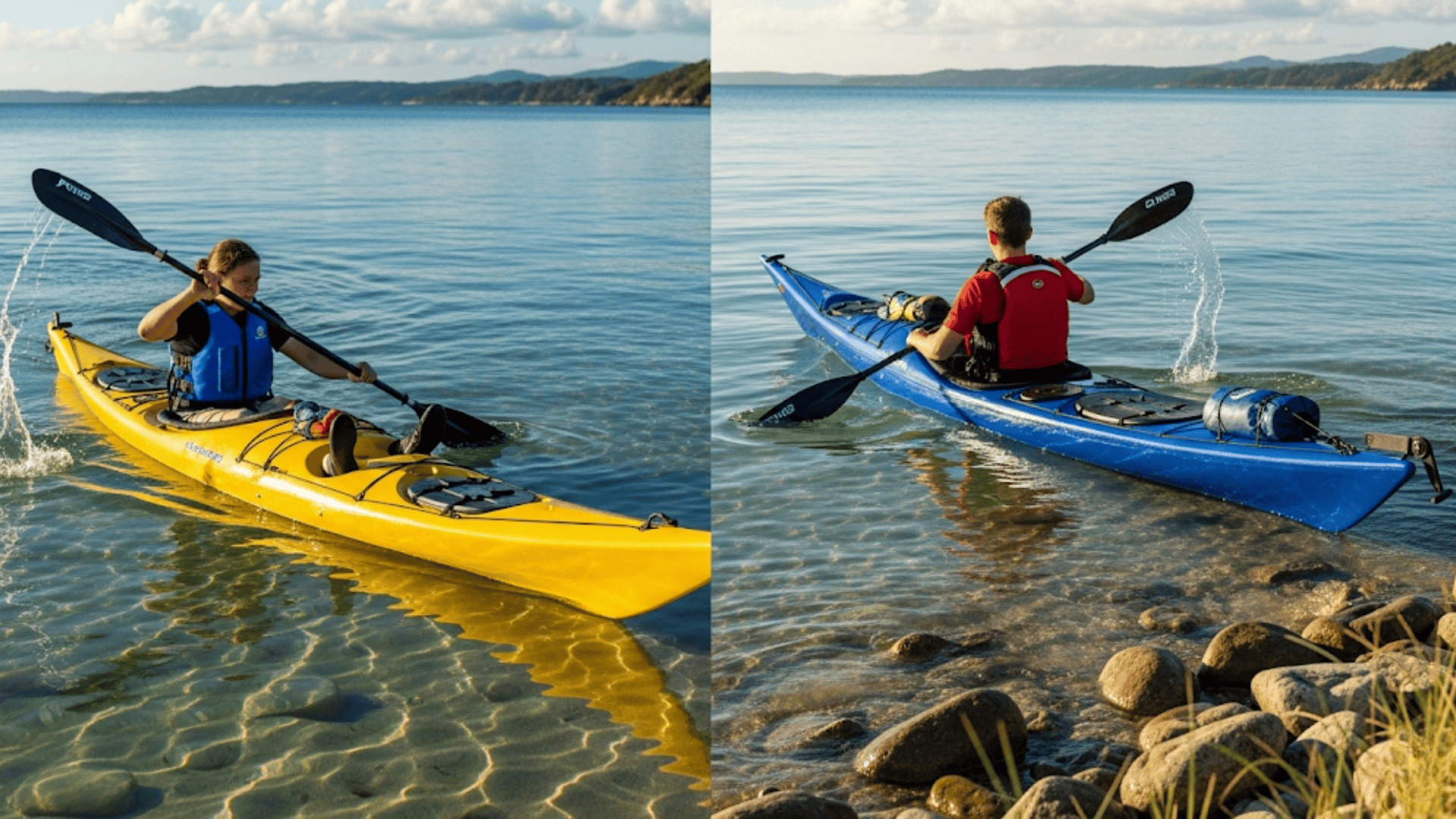
Choosing the right kayak affects your safety and enjoyment. Here are the main types:
Sit-on-Top Kayaks (Beginner Friendly)
Sit-on-top kayaks feature an open design, where paddlers sit on a sealed hull with scupper holes that automatically drain water.
They allow easy entry and exit, quick recovery after falls, and greater stability thanks to a wider hull. With no spray skirt required, they’re ideal for beginners, warm waters, and recreational kayaking.
Top Sit-on-Top Kayaks
Sit-Inside Sea Kayaks (For Long Trips & Cold Water)
Sit-inside kayaks have a traditional enclosed cockpit where paddlers sit with their legs inside the hull. A spray skirt seals the opening to prevent water from entering in rough conditions.
With watertight storage, superior protection from cold, efficient paddling, and tracking systems, they’re best for experienced kayakers tackling cold water and long-distance trips.
Top Sit-Inside Sea Kayaks
How to Kayak in the Ocean: Basic Techniques
Learning proper techniques makes ocean kayaking safer and more enjoyable. With the right preparation and skills, you’ll feel more confident and in control on the water.
1. Before You Launch
Preparation starts before you even step into your kayak. Taking time to check conditions and plan ahead will make your outing safer and smoother.
- Check Weather: Avoid high winds, storms, or large waves. Start with calm conditions.
- Study Tides: Understand high and low tide times. Launch at low tide when possible.
- Know the Area: Research local currents, hazards, and landing spots.
- Tell Someone: Share your planned route and return time.
2. Launching Your Kayak
Getting into the water properly helps you avoid capsizing right from the start. These techniques ensure a stable and controlled launch.
- Beach Launch: Place your kayak in shallow water perpendicular to shore. The bow should face away from land.
- Getting In: Straddle the cockpit, sit down, then pull your legs inside. Use your paddle for balance.
- Through Surf: Face waves head-on. Paddle hard to maintain momentum over each wave.
3. Basic Paddling Strokes
Mastering core strokes gives you control, speed, and maneuverability in the ocean. Focus on using your torso for power, not just your arms.
- Forward Stroke: Reach forward with the paddle, immerse the blade fully, and pull through the water using torso rotation.
- Sweep Stroke: Use wide arcing strokes to turn the kayak.
- Draw Stroke: Pull water toward the kayak to move sideways.
- Bracing: Use the paddle blade flat on the water surface to prevent tipping.
4. Reading Ocean Conditions
The ocean is dynamic, and knowing how to read conditions helps you anticipate challenges and paddle more safely.
- Wave Sets: Waves usually come in groups of 5–8, followed by calmer periods.
- Rip Currents: Look for channels of choppy water or foam moving away from shore.
- Wind Direction: Offshore winds push you away from land; onshore winds help you return.
Pro Tip: Start by practicing in calm bays or nearshore areas before moving into open ocean conditions.
Key Features to Look for in an Ocean Kayak
Understanding kayak specifications helps you select the ideal boat for your specific needs. These four features have the biggest impact on performance and safety in ocean conditions.
| FEATURE | SPECIFICATION | BENEFIT |
|---|---|---|
| Length | 14-18 feet | Longer boats track straighter and move faster |
| Width | 21-24 inches | Narrower kayaks are faster but less stable |
| Storage | Sealed compartments | Keeps gear dry and provides emergency flotation |
| Steering | Rudder or skeg | Helps maintain direction in wind and waves |
Match these features to your paddling style and experience level. Beginners often prefer shorter, wider kayaks for their stability, while experienced paddlers opt for longer, narrower designs for increased speed.
Essential Gear for Ocean Kayaking
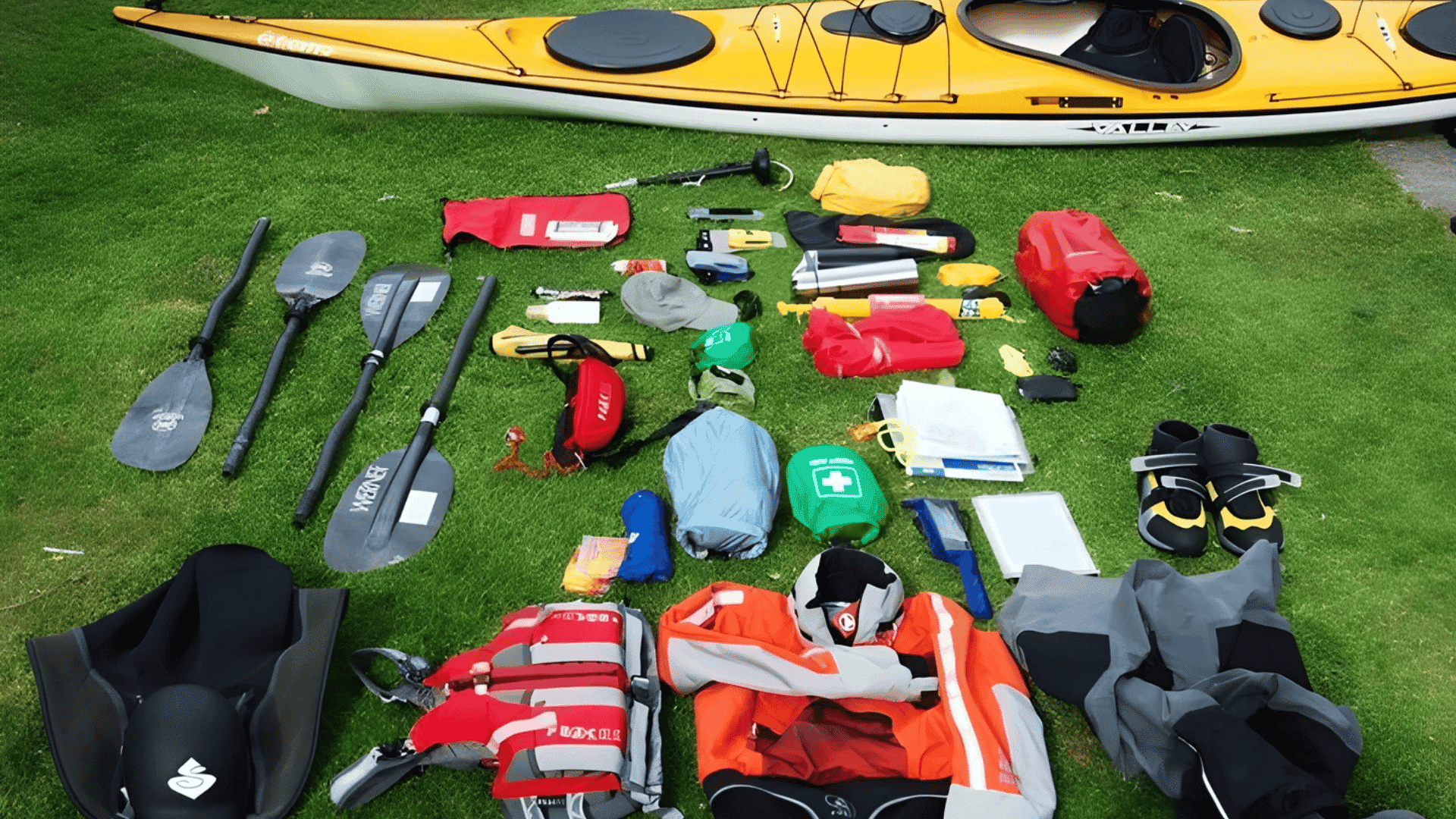
Safety gear is not optional when paddling in the ocean. Here’s what you need:
1. Safety Equipment
Your safety should always come first. These items ensure you’re prepared for emergencies, unexpected conditions, or accidents on the water:
- Personal Flotation Device (PFD): Coast Guard–approved, snug fit, worn at all times.
- Whistle or Signal Device: For attracting attention in emergencies.
- Bilge Pump or Sponge: To remove water from the cockpit.
- Marine VHF Radio or Waterproof Phone Case: Stay connected in case of trouble.
2. Paddle Gear
Your paddle is your engine on the water. Choosing the right one, and always carrying a backup, ensures you can keep moving even if something goes wrong:
- Primary Paddle: Lightweight fiberglass or carbon paddle matched to your height and kayak width.
- Spare Paddle: Secure on deck in case of breakage.
3. Clothing
Ocean conditions can change quickly, and dressing appropriately helps you stay comfortable, warm, and protected from the elements:
- Dress for Water Temperature: Wear a wetsuit or drysuit in cold waters, and opt for lightweight, quick-dry gear in warm climates.
- Sun Protection: Hat, polarized sunglasses, long-sleeve shirt, sunscreen.
- Footwear: Neoprene boots or water shoes for grip and protection.
4. Additional Items
A few extra items can make your trip smoother, more enjoyable, and better prepared for surprises:
- Dry Bags: Keep phone, keys, snacks, and spare clothes dry.
- First Aid Kit: Compact, waterproof pack.
- Food & Water: Hydration and energy for your trip.
Ocean Kayaking Safety Tips for Beginners
Safety should always come first when paddling in the ocean. Capsizing is something every kayaker will experience, so staying calm is essential.
Cold water can quickly cause hypothermia, even in summer, and vast ocean distances make it easy to get disoriented. Equipment failure, like broken paddles or a damaged kayak, can also create dangerous situations.
To reduce risks, beginners should remain close to shore and never paddle alone. Going with a group provides extra security and assistance.
Always recognize your skill limits and avoid challenging conditions until you’re ready. Practicing rescue techniques, such as wet exits and re-entries, in calm waters builds confidence.
If you capsize, perform a wet exit, flip your kayak upright, and attempt self-rescue. Assisted rescues, like the T-rescue, offer additional help. In serious emergencies, call for assistance using a VHF radio, phone, or whistle.
Kayak Maintenance After Saltwater Trips
Saltwater is tough on equipment, but proper care ensures your kayak and gear last longer and perform better. With just a few simple habits, you can keep everything in top condition.
- Rinse After Every Trip: Use fresh water to wash salt off your kayak, paddle, and gear.
- Dry Completely: Air-dry all equipment to prevent mold, rust, and corrosion.
- Inspect Regularly: Check for cracks, loose fittings, or worn spots after each use.
- Store Smart: Keep kayaks indoors or shaded, supported on proper racks to avoid UV damage and hull distortion.
- Prep Seasonally: Give your gear a deep clean and inspection before long storage periods.
A few minutes of care after each paddle trip will save you costly repairs and keep your ocean kayaking experiences smooth and safe.
Ocean Kayaking vs. Sea Kayaking: What’s the Difference
Many people use these terms the same way, but they have key differences. Understanding these differences helps you choose the right type of paddling for your skill level and goals.
| ASPECT | OCEAN KAYAKING | SEA KAYAKING |
|---|---|---|
| Location | Near shore, protected waters | Open water, far from land |
| Trip Length | Shorter (2-4 hours) | Longer (full day to multi-day) |
| Experience Level | Beginner-friendly | Requires more experience |
| Water Conditions | Calmer, more sheltered | Rougher, more exposed |
| Focus | Recreation and sightseeing | Expedition and endurance |
| Safety Requirements | Basic safety gear | Advanced safety equipment |
Choose ocean kayaking near shore when starting out. This gives you a chance to build skills in safer conditions before moving to more challenging open waters.
Final Thoughts
Ocean kayaking is more than just a water sport; it’s a chance to connect with nature, challenge yourself, and enjoy the freedom of paddling along the coast.
With the right kayak, proper gear, safety knowledge, and consistent practice, you can tour bays, harbors, and shorelines with confidence.
From spotting marine wildlife to finding hidden beaches, every trip brings a new experience. Remember, preparation and respect for the ocean are key to a safe and rewarding experience.
Have you tried ocean kayaking before, or are you planning your first trip soon?
Drop a comment below; we’d love to hear your experiences and tips!

